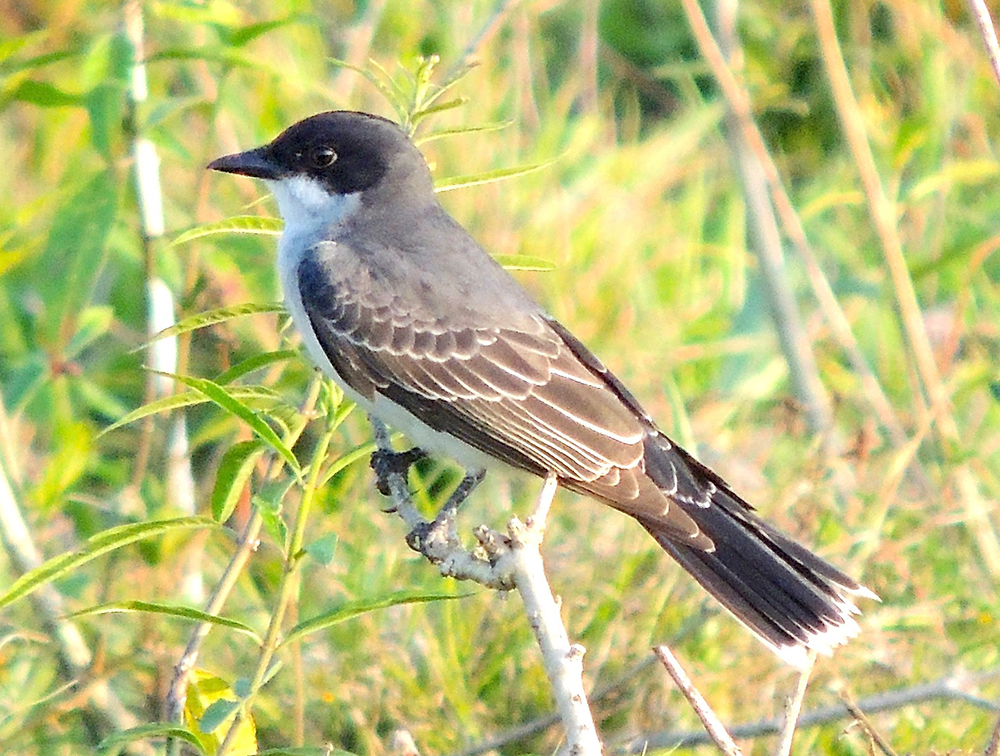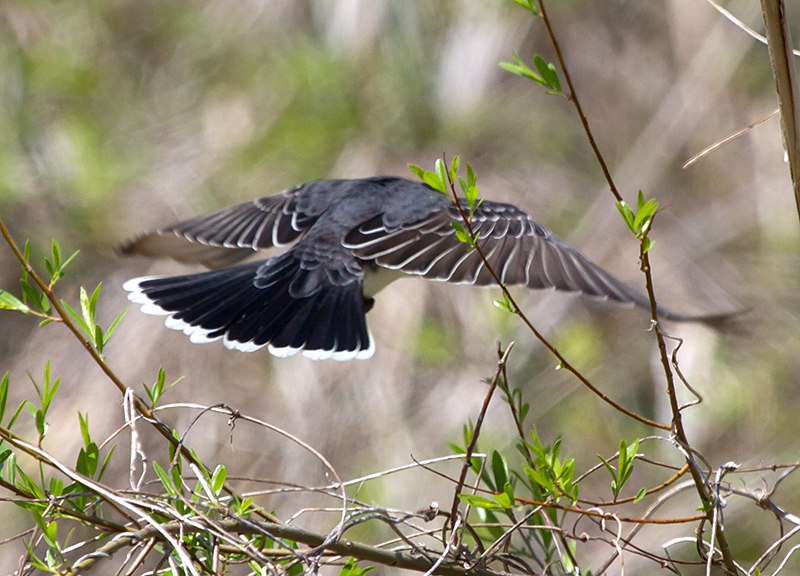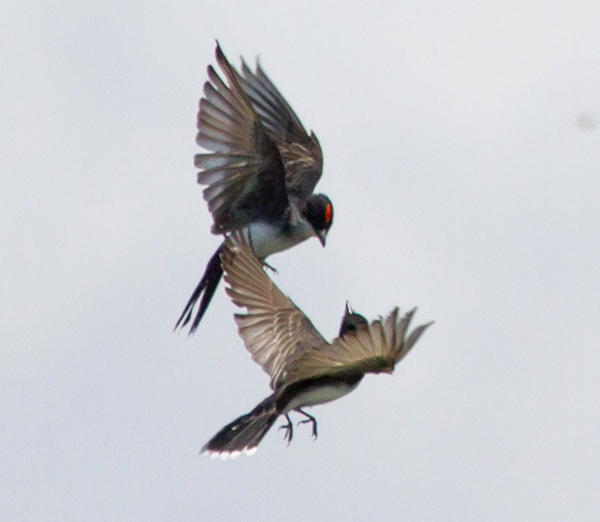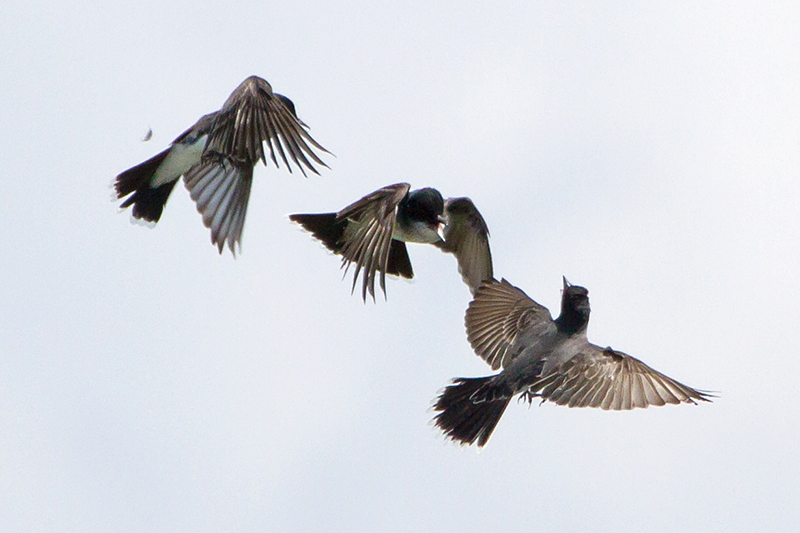| Early Spring Date: | April 27 | Late Spring Date: | May 25 |
| Infrequently Seen | |
Spring: Eastern Kingbirds are common spring migrants in the Washington metro area. They breed in the area, but they are infrequently seen at Monticello Park. They nest at various places along the Potomac River, including Belle Haven and Theodore Roosevelt Island.
Fall: Eastern Kingbirds are extremely rare during the fall at Monticello.
Where to See Them in the Park
Eastern Kingbirds prefer woodland clearings, often near water, and Monticello does not offer that habitat. There is no best place to look for them in the park.
Physical Description

Eastern Kingbirds have white underparts and a gray back with no wingbars. The sexes are similar, and adult plumage looks the same in the spring and fall.

A prominent fieldmark is the white band at the end of their tail.

Both the male and female have a small reddish-orange patch on their crown, which is usually concealed.

Kingbirds tend to be aggressive, and you sometimes see them attacking other species or quarreling among themselves.
Vocalizations
The call of the kingbird is a long series of sharp, high-pitched notes, sounding like electric zaps. The aggressiveness of the song makes it sound as if the kingbird is trying to sing louder, but is not capable of doing so.
Hear the vocalizations of the Eastern Kingbird.
Notes
The Eastern Kingbird is a tyrant flycatcher. The word tyrant now suggests a despotic ruler. It used to mean simply a lord, but because so many lords were despotic, the word developed a negative connotation. The scientific name of the Eastern Kingbird is Tyrannus tyrannus, which is a tautonym — the genus and species name are the same. Relatively few birds in North America are tautonyms. Perhaps the most notable is the Anhinga. Its scientific name is Anhinga anhinga, and it is the only bird in the world whose common name, genus name, and species name are the same.
Origin of Names
Common Name: Eastern from its breeding range. Kingbird from the crown on its head or its aggressiveness.
Genus and Species Names: Tyrannus means lord.
Eastern Kingbird video footage
Return to the Index
